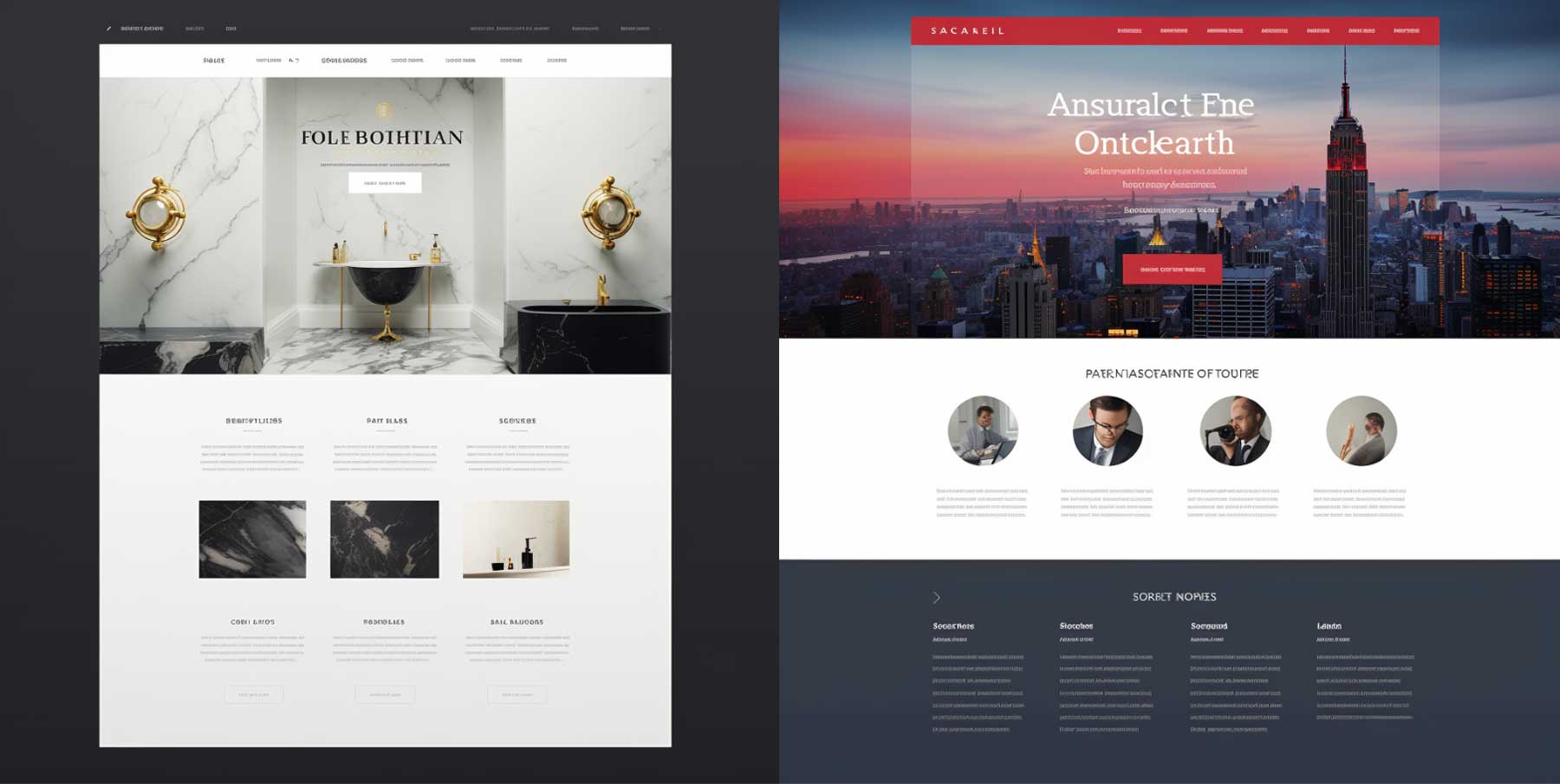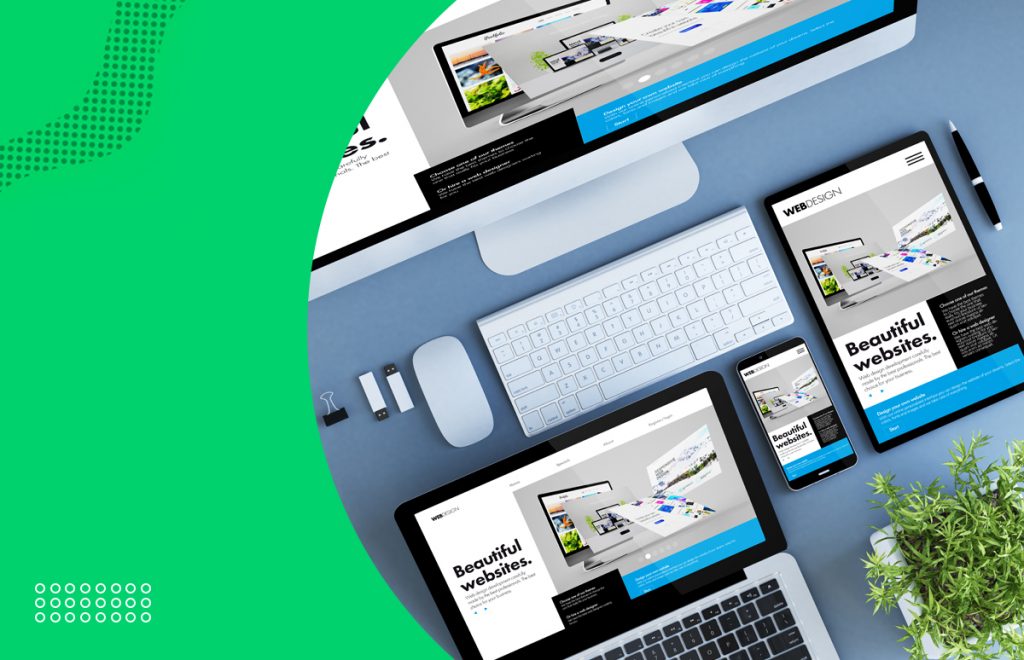How to Improve Your Website Design for Better Conversion Rates
Modern Website Layout That Records Focus and Converts
In a progressively electronic landscape, modern-day website style has actually emerged as a crucial element in capturing user focus and driving conversions. As we check out these necessary parts, it ends up being clear that comprehending their interplay can considerably impact a site's efficiency and user complete satisfaction.
Value of Visual Pecking Order
Aesthetic pecking order is an essential aspect in web site layout, as it guides customers' attention and boosts their general experience. By tactically arranging content, developers can guide customers to one of the most essential info first, therefore boosting engagement and improving usability. Reliable aesthetic power structure utilizes various strategies, including dimension, spacing, color, and comparison. Bigger aspects normally attract the eye, while contrasting colors can highlight essential messages, making them stand apart among more controlled elements.
Integrating a sensible flow in content setup is important; as an example, placing one of the most important information at the top of a web page cultivates prompt recognition. Constant usage of typography, such as differing font sizes and designs, helps establish a clear web content framework. This company not only aids in navigating yet also constructs count on, as individuals really feel extra comfy when they can conveniently locate what they are looking for.
Eventually, a well-executed visual hierarchy not only improves aesthetic charm but likewise dramatically influences user actions. By focusing on necessary components and ensuring a seamless experience, designers can successfully transform site visitors into customers, strengthening the value of this fundamental style principle in modern-day internet site growth.
Responsive Layout for All Instruments
Producing a seamless experience across different devices is essential in today's digital landscape, where users accessibility websites from desktops, tablet computers, and smart devices alike. Receptive layout is a crucial approach that makes certain sites adjust fluidly to different screen orientations, resolutions, and dimensions. By utilizing versatile grids, images, and CSS media questions, designers can produce designs that keep visual integrity and performance, regardless of the device being made use of.
The significance of receptive design extends past aesthetics; it straight impacts user engagement and conversion prices. A site that operates well on all tools urges longer check outs and reduces bounce rates, as customers are most likely to communicate with web content that is easy to browse. Search engines, especially Google, prioritize mobile-friendly sites in their positions, making receptive design a crucial component of search engine optimization (SEO)
Incorporating responsive layout not just boosts user experience but likewise simplifies the advancement procedure. By developing a solitary site that works across gadgets, organizations can conserve time and sources contrasted to establishing different mobile and desktop computer variations. Ultimately, responsive style is a basic strategy for modern site style, ensuring ease of access and contentment for all customers, despite their tool.
Involving Interactive Components
While a receptive layout lays the foundation for a useful internet site, including engaging interactive components is vital for capturing individual interest and promoting deeper links. Website Design. Interactive components, such as animations, tests, and clickable infographics, develop a more dynamic customer experience, encouraging site visitors to spend even more time on the site
Incorporating interactive functions can likewise guide individuals through complicated details, making it less complicated to absorb web content. Interactive sliders can highlight product variations, while embedded video clips can supply demonstrations or testimonies that reverberate even more than static pictures or message. Additionally, gamification strategies, like incentives for finishing jobs or involving with material, can enhance individual inspiration and retention.
Effective use interactive elements not just enriches the user experience but can likewise result in higher conversion rates. By making communications enjoyable and interesting, companies can grow a sense of loyalty and look here trust fund with their target market. It is essential to balance interactivity with efficiency; excessively complex features may impede website rate, adversely impacting user satisfaction. Ultimately, integrating well-designed interactive elements can substantially raise a site's efficacy, driving involvement and conversions in today's competitive electronic landscape.
Structured Navigating Practices
Reliable navigation is a keystone of any effective internet site, as it directly influences individual experience and material access. Streamlined navigating practices make certain that individuals can quickly find information, enhancing their interaction with the website. A well-structured navigation food selection need to be straightforward and user-friendly, commonly including a minimal number of key groups to prevent overwhelming site visitors.
To accomplish streamlined navigating, developers should focus on an ordered structure that logically organizes material. Implementing breadcrumb tracks can provide individuals with context regarding their current area within the website, permitting smooth backtracking. Furthermore, making use of drop-down food selections can successfully conserve room while still giving accessibility to subcategories.
Responsive style is critical, as navigating ought to be functional throughout all gadgets (Website Design). Mobile individuals, in specific, gain from touch-friendly menus and retractable areas that keep functionality without endangering aesthetic appeals

Efficient Call-to-Action Techniques
A well-crafted call-to-action (CTA) is crucial for guiding customers toward wanted outcomes on a site, as it urges them to engage with web content or purchase. To optimize their effectiveness, CTAs should be clear, compelling, and tactically positioned throughout the website.
First, use action-oriented language that connects seriousness or value, such as "Begin," "Sign up with Now," or "Insurance claim Your Price cut." This language not only motivates customers however also establishes clear expectations about the next steps.
Second, consider style aspects; CTAs ought to stand out visually through contrasting shades, adequate whitespace, and prominent positioning. A switch that is very easy to see and click rises the chance of individual interaction.
In addition, customizing CTAs based on click resources user behavior or demographics can dramatically enhance engagement. Tailored messages resonate more with individuals, driving greater conversion rates.

Verdict
Finally, contemporary internet site style stresses the integration of visual power structure, receptive layouts, engaging interactive components, structured navigating, and effective call-to-action techniques. These more information components jointly boost customer experience, ensuring that visitors continue to be engaged and inspired to check out material better. By focusing on these layout concepts, companies can considerably enhance individual retention and conversion prices, eventually causing better success in the electronic landscape. The constant advancement of website design highlights its vital duty in reliable on-line interaction and advertising and marketing.
In a significantly electronic landscape, contemporary website design has arised as an essential element in capturing user interest and driving conversions.Visual hierarchy is a crucial component in internet site layout, as it overviews users' focus and improves their overall experience.The significance of responsive design expands beyond looks; it straight influences individual engagement and conversion prices.Incorporating receptive design not just improves user experience yet also improves the advancement procedure. Eventually, receptive design is a basic strategy for modern-day web site layout, making sure ease of access and satisfaction for all individuals, no matter of their device.